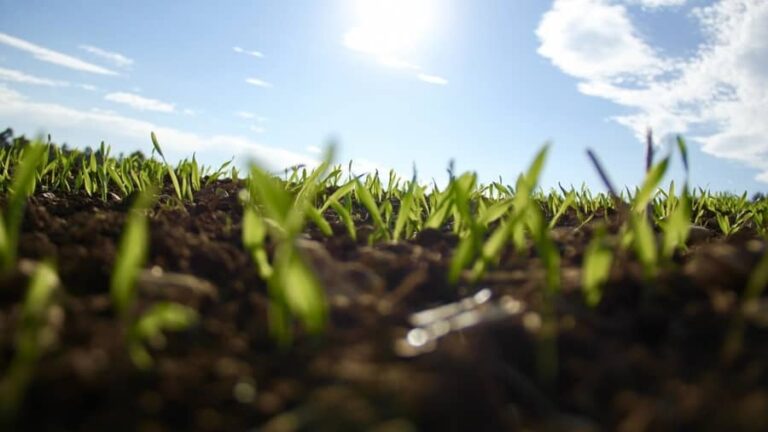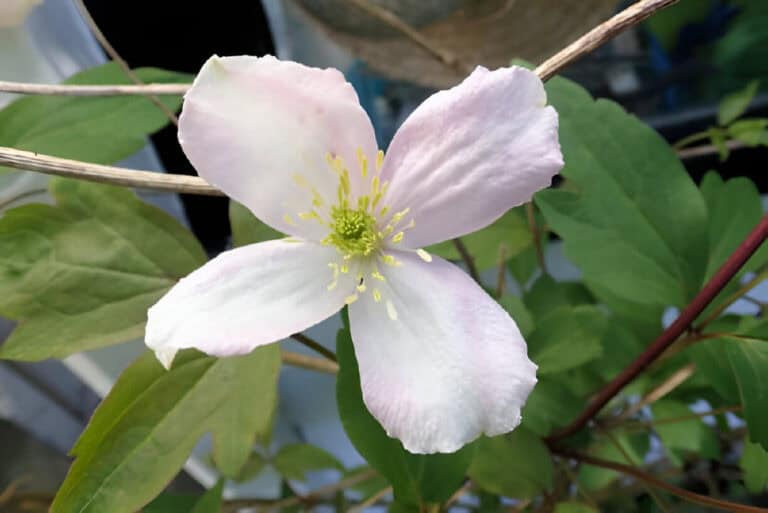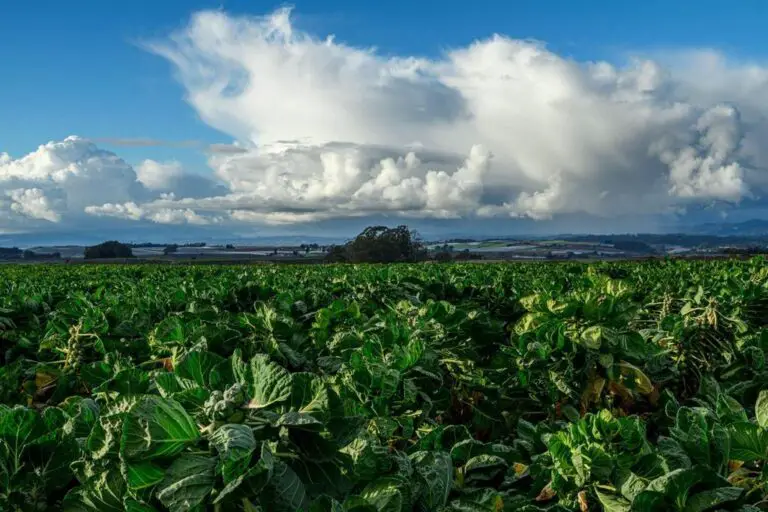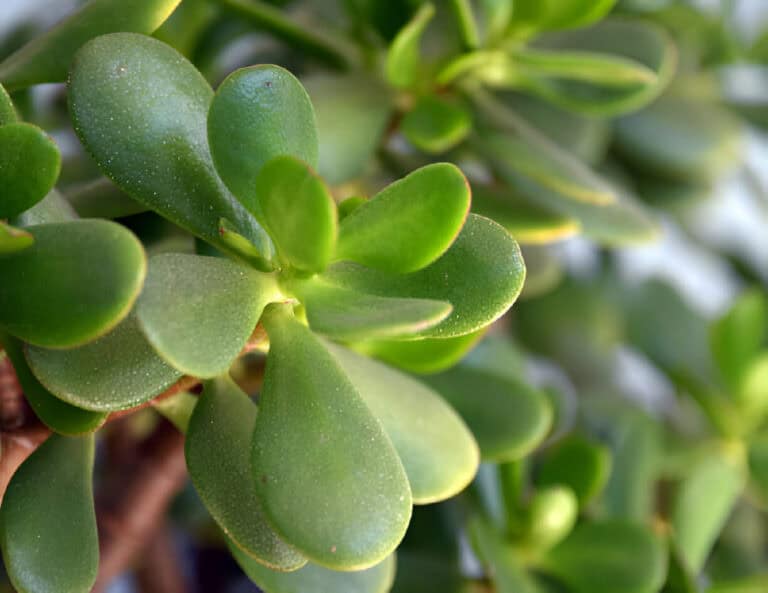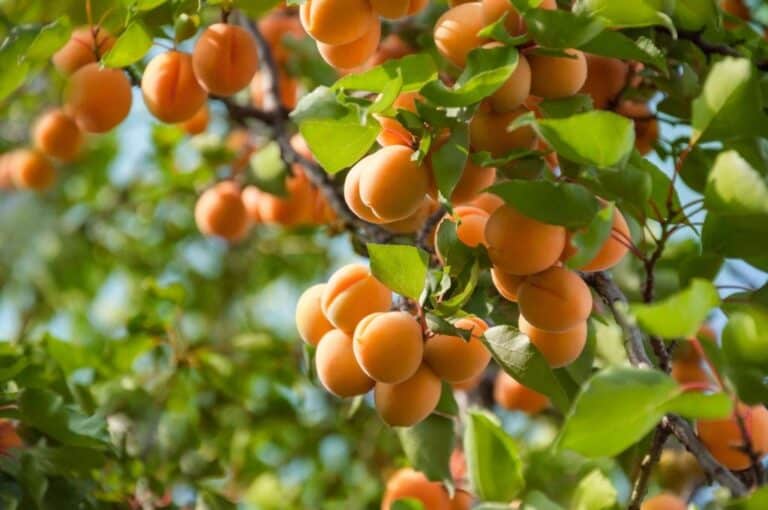Carrots Growing Stages (with Pictures): Plant Life Cycle & Timeline

Ready to grow the juiciest, crunchiest carrots in town? Look no further! This blog post takes you on a journey through the life cycle of the humble carrot plant, from seed to seed.
To make sure you have a good harvest, you need to know your carrots’ growth stages and life cycle. Are you trying to find out why they need specific care and maintenance at each stage?
If so, this article is for you. In this article, we will explain the different stages of carrot growth and provide a timeline of their life cycle.
Get your gardening gloves ready, because we’re diving into the world of carrots and their life cycle, one stage at a time!
Farmers, on the other hand, plant carrots directly in the ground. The seeds will germinate and grow into mature carrot plants. Unlike potatoes, carrots have a single taproot, which is the primary root of the plant that grows downward into the soil. This taproot is what produces the edible carrot root that we consume.
Carrots Basic
Potatoes and carrots are two commonly grown vegetables, but their methods of cultivation are different. In commercial potato farming, farmers use seed potatoes, which are pieces of a mature potato that contain eyes, or buds, that can sprout into new plants. This growing potatoes method allows farmers to produce a large number of potato plants quickly and efficiently.
If the top of a mature carrot plant is left above ground, the foliage will continue to grow, but the carrot itself will not regrow. This is because the carrot is a biennial plant, meaning that it completes its life cycle in two years. In the first year, the plant focuses on producing foliage and storing energy in the taproot, and in the second year, it produces flowers and seeds. Once the seeds have been produced, the plant will die.
Different Carrots Varieties
Carrots come in five different types of categories: Danvers, Nantes, Imperator, Chantenay, and Mini. All of these types have lots of varieties to choose from within each category. Commercially, most carrots planted are of the Imperator variety. This is because carrots from Imperator’s varieties produce a deep orange color and are uniform.
When farmers want to choose the variety they want, the decision comes down to taste, yields, top growth, length, uniformity, color, and disease resistance. Color and uniformity are usually the top criteria that create marketable carrots.
Carrots are a type of flowering plant. They belong to the mustard family and are usually yellow, orange, or red in color. Carrots grow in spurts and have a life cycle that includes four growth stages: seed, bud, juvenile, and adult. Carrot seed grows into a small bud, which becomes a juvenile carrot.
Carrots Growing Stages
Carrots are biennial plants that are commonly grown as annuals. Being a biennial plant, carrots take two years to complete their life cycle.
Most carrots are harvested after 70 days for their edible taproot and are not allowed to finish their life cycle. Baby carrots are any carrots that are harvested immaturely and can be harvested anytime the carrot reaches the size of a finger.
Germination Stage
During the germination stage, a carrot seed will sprout and send out a thin, white root. The roots will grow down into the soil and anchor the plant, so it can start to take in nutrients. The shoot will grow up and push the seed coat off of the plant. Once the shoot reaches a certain height, leaves will start to form.
A carrot seed will germinate in 1–3 weeks, depending on the weather. They will germinate faster in warmer weather and slower in cooler weather. The longer the carrot seeds stay in the ground without sprouting, the higher the chance of poor germination rates and possibly needing to replant.
Vegetative Growth Year-1 Stage
Vegetative growth of the carrot plant starts with leaf development until the third set of leaves develops. At this point, the roots will begin to grow. It will grow foliage above ground and a taproot that is a food storage root for the plant.
This growth will continue until temperatures start to dip below 50 degrees and the plant will start to enter dormancy.
Dormancy Stage
During the dormancy stage, the foliage above the ground will die back and growth beneath the ground will stop. This is a way for some plants to stay alive. It lets a plant with a long growing season live and reproduce in a place where the growing season is shorter.
Vegetative Growth Year 2 Stage
During this phase, the foliage will start to grow above ground again. As the season progresses, the stems will grow longer and carrot flowers will appear.
Many people who grow carrots at home don’t let them live to see the second season. Only a small number of people like to let their plants self-seed.
If plants are left in the ground over the winter, they will start to grow again in the spring. They set seeds and finish their life cycle.
Flowering & Reproduction Stage
The large taproot the plant has produced during its vegetative growth gives it the energy to form flowers and seeds. Carrot plants produce flowers in clusters called umbels. Within each batch of umbels are smaller clusters of flowers called umbellates.
Individual umbels will flower for 7–10 days, and the entire flowering process of the plant will take 30–50 days. Carrot flowers are pollinated by insects, the majority of which are bees.
Upon successful pollination of a flower, the carrot plant produces “fruit” called schizocarps. Each schizocarp will have one seed, and each carrot plant will make about 1,000 of these.
Another schizocarp we’re all more familiar with are the winged “helicopter” seeds that fall so gracefully from maple trees.
How Long Until Carrots are Ready for Harvest?
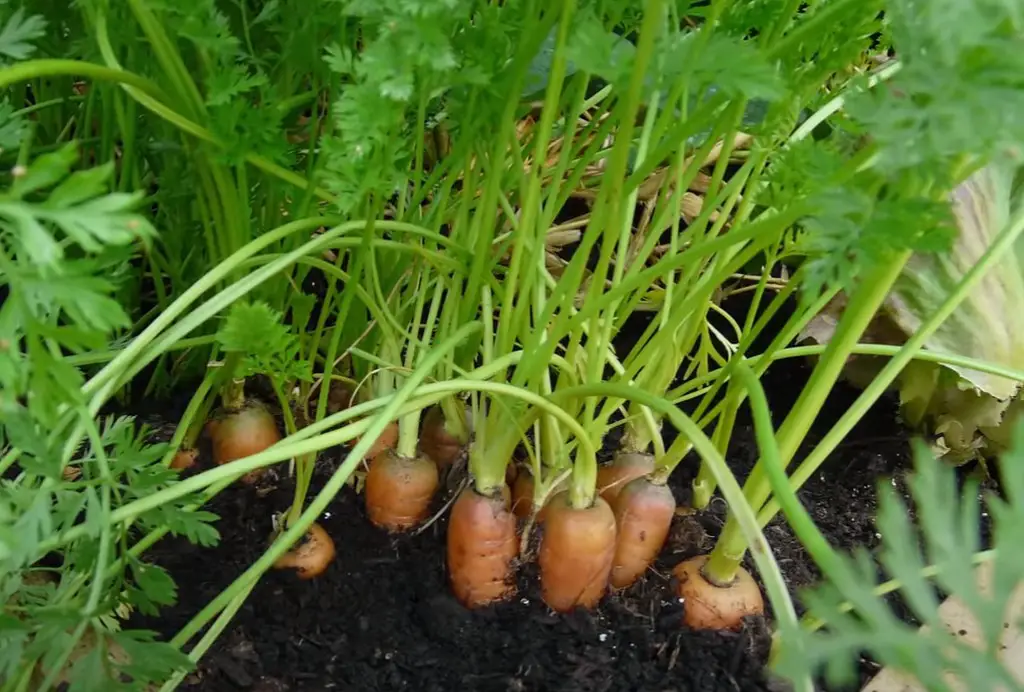
When you’re growing carrots, the time until harvest will depend on the variety you planted and the weather conditions. Most carrots are ready for harvest between 55 and 70 days after planting, but some can take up to 85 days.
Warmer weather speeds up the growth process, while cooler weather slows it down. You’ll know carrots are ready for harvest when they reach the size you want them to be. The key is to not let them get too big, or they’ll start to lose their flavor and sweetness.
Do Carrots Grow in Bunches?
Carrots do not grow in bunches. Each carrot is the root system of one plant. The top growth has several stems that come off of the top of each carrot. Some farmers and gardeners will call different varieties of carrots “bunch” varieties. These are uniform carrots that look good in bunches.
When carrots are planted close together, they will form a bunch and be easier to harvest. However, if you want your carrots to grow in long rows, you will need to plant them further apart. Carrots are a vegetable to grow in your garden, and they are also very healthy for you.
Do Carrots Grow From Seeds?
Carrots are grown naturally from seed. Carrot plants are capable of being produced asexually—that is, being cloned from another carrot—but it will not result in the growth of another carrot.
The above-ground foliage will regrow, flower, and produce carrot seeds if pollinated, but it will not produce another edible taproot, i.e., carrots. Instead, if you dig it up from the ground, you’ll see roots growing from the bottom and sides of the top of the old carrot.
Where carrots are grown, you will see their growth as clones, and allowed to flower and seed will result in the seeds being a mix of the two parent plants. It will not be identical to the carrot it came from. This is because most carrots are grown from hybrid seeds that were crossbred to produce a hybrid with certain qualities like higher yields and disease resistance.
If you bought an organic or colorful variety of carrots, there’s a higher chance the carrot was grown from open-pollinated or heirloom varieties.
Here is an article about seed production and the difference between open-pollinated, heirloom, and hybridized seeds.
Do Carrots Need Pollination?
Carrots do not need pollination in order to produce carrots. The carrot plant will produce harvestable carrots and above-ground foliage as part of its vegetative growth during the first year of its life.
To produce carrot seeds for planting the next year, pollination is required. Carrots are biennial plants, which means that they only live for two years. During the second year, they plant flowers and make seeds.
Carrots are pollinated by insects, mostly bees, and need them to move pollen from one flower to the next and pollinate the flowers. Carrot flowers are what’s called “perfect flowers,” with male and female organs on the same flower, so an insect buzzing around one flower can also cause pollen to spread to the stigma of the flower.
FAQs on Carrots Plant Growth Stages Life Cycle: How Fast It Grows?
Do carrot plants keep producing?
Carrots continue to grow after you plant them. They also do not take a long time to mature. After the risk of frost has passed, you may sow fresh seeds every two weeks to ensure a continuous harvest through the fall. You can begin the first crop in mid-spring.
How Can You Make Carrots Grow Faster?
When carrots grow in temperatures between 60 and 70 F, they taste the best. Give them the soil, fertilizer, and moisture conditions that promote rapid root formation to promote their growth.
What type of Carrot Is the Sweetest?
Carrots with brilliant orange or red color are often the sweetest because they contain the most sugar. Some purple varieties are also tasty. Pusa Rudhira, Kuroda, and Red-Cored Chantenay As a result, red carrots are the sweetest.
Which fertilizer is best for carrots?
It is advisable to use a fertilizer with a low nitrogen content and a high potassium and phosphate content. Your carrot plant will benefit from a 0-10-10 or 5-15-15 fertilizer. Because potassium and phosphate encourage root development, and carrots are root crops, these minerals will aid in their growth.

